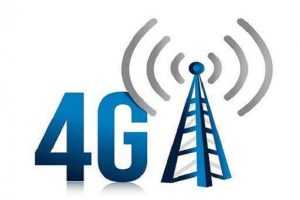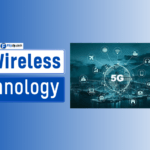Introduction to 4G Wireless Technology
Imagine a world where downloading a full-length movie takes mere seconds, where video calls are crystal clear without any lag, and where multiple devices can connect to the internet simultaneously without compromising speed. This is the reality that 4G wireless technology has brought to millions around the globe. Since its inception, 4G has set new standards in mobile communication, laying the groundwork for the advanced wireless technologies that followed.
What is 4G Wireless Technology?

4G wireless technology refers to the fourth generation of mobile network standards, succeeding 3G and preceding 5G. It is designed to provide faster data transmission speeds, enhanced network reliability, and improved performance to support a wide range of mobile services and applications. Based on the principles of Long Term Evolution (LTE) and Worldwide Interoperability for Microwave Access (WiMAX), 4G represents a significant leap forward in mobile communication. As advancements continue, the rise of GHz wireless technology is paving the way for even faster and more efficient mobile networks.
Evolution of Mobile Networks
- 1G: The first generation, focusing on analog voice transmission.
- 2G: Introduced digital voice and basic data services like SMS.
- 3G: Enhanced data transmission, enabling mobile internet access.
- 4G: Further improved data speeds and network capabilities, supporting high-definition multimedia.
- 5G: The latest generation, offering even higher speeds, lower latency, and support for a massive number of connected devices.
Key Features of 4G Technology

4G wireless technology is characterized by several key features that distinguish it from its predecessors and enable its superior performance.
Enhanced Data Speed
One of the most significant advancements in 4G technology is the substantial increase in data transmission speeds. 4G networks can deliver peak speeds of up to 100 Mbps for high-mobility communication (such as in cars and trains) and 1 Gbps for low-mobility communication (like pedestrians and stationary users). This boost in speed facilitates faster downloads, smoother streaming, and more responsive internet applications.
Improved Network Capacity

4G networks are designed to handle a larger number of simultaneous connections without degradation in performance. This is achieved through advanced network architectures and technologies that optimize the use of available spectrum. Enhanced network capacity ensures that users experience consistent service quality even in densely populated areas or during peak usage times.
Low Latency
Latency refers to the delay between sending and receiving data. 4G technology significantly reduces latency, often bringing it down to around 30-50 milliseconds. Lower latency is crucial for real-time applications such as online gaming, video conferencing, and autonomous vehicle communication, where even minor delays can impact performance and user experience.
Advanced Modulation Techniques
4G employs sophisticated modulation schemes like Orthogonal Frequency Division Multiplexing (OFDM) and Multiple Input Multiple Output (MIMO). OFDM enhances spectral efficiency and reduces interference, while MIMO increases data throughput by utilizing multiple antennas at both the transmitter and receiver ends. These techniques collectively contribute to the high-speed and reliable performance of 4G networks.
All-IP Networks
Unlike previous generations that relied on circuit-switched networks for voice and data, 4G adopts an All-IP (Internet Protocol) architecture. This means that all services, including voice calls, are transmitted as data packets over the internet. The all-IP approach simplifies network management, reduces latency, and allows for more flexible and scalable service offerings.
Benefits of 4G Wireless Technology
The advancements brought by 4G wireless technology have translated into numerous benefits for both consumers and industries.
Superior Mobile Internet Experience
With its high data speeds and reliable connections, 4G offers an unparalleled mobile internet experience. Users can stream high-definition videos without buffering, participate in seamless video calls, and download large files swiftly. This enhanced connectivity has transformed how people consume media, work remotely, and stay connected.
Facilitation of Emerging Technologies
4G serves as a robust foundation for emerging technologies such as Internet of Things (IoT), augmented reality (AR), and virtual reality (VR). The high bandwidth and low latency of 4G networks enable these technologies to function effectively, paving the way for innovative applications in various fields, including healthcare, education, and entertainment.
Enhanced Communication Services
Beyond internet browsing, 4G enhances various communication services. Voice over LTE (VoLTE) provides higher-quality voice calls compared to traditional voice services. Additionally, messaging apps and social media platforms benefit from the improved network capabilities, allowing for richer and more interactive communication.
Economic Impact
The deployment of 4G networks has had a significant economic impact globally. It has spurred the growth of mobile-based businesses, increased productivity through better connectivity, and created numerous job opportunities in the telecommunications sector. Moreover, enhanced connectivity has facilitated digital inclusion, bridging the gap between urban and rural areas.
4G vs. Previous Generations: A Comparative Analysis
Understanding the advancements that 4G offers requires a comparison with its predecessors.
| Feature | 3G | 4G |
|---|---|---|
| Data Speed | Up to 42 Mbps (theoretical) | Up to 1 Gbps (theoretical) |
| Latency | ~100-150 ms | ~30-50 ms |
| Network Architecture | Circuit-switched for voice, packet-switched for data | All-IP |
| Modulation Techniques | WCDMA, CDMA | OFDM, MIMO |
| Typical Applications | Mobile internet, video calls | HD streaming, online gaming, VoLTE |
Significant Improvements
- Speed: 4G offers a dramatic increase in data speeds, enabling more data-intensive applications.
- Latency: Reduced latency enhances real-time communication and interactive applications.
- Architecture: The all-IP network simplifies service delivery and management.
- Capacity: Enhanced capacity allows more devices to connect simultaneously without compromising performance.
Common Misconceptions About 4G
Despite its widespread adoption, several misconceptions about 4G technology persist. Addressing these can provide a clearer understanding of its capabilities and limitations.
1. 4G is Just an Upgrade Over 3G
While 4G builds upon the foundation laid by 3G, it introduces fundamentally different technologies and architectures. The shift to an all-IP network, advanced modulation techniques, and significantly higher data speeds distinguish 4G as a major leap rather than a mere upgrade.
2. 4G is the Fastest Available Mobile Network
With the advent of 5G, 4G is no longer the pinnacle of mobile network speed. However, 4G remains widely used and continues to offer robust performance, especially in areas where 5G infrastructure is still being developed.
3. 4G Guarantees Unlimited High-Speed Data
While 4G provides the infrastructure for high-speed data, actual user experience can vary based on factors such as network congestion, signal strength, and the capabilities of the user’s device. Unlimited high-speed data often depends on the service plan and network policies.
4. All Devices are 4G Compatible
Not all mobile devices are equipped to handle 4G technology. Older devices may only support 2G or 3G networks, necessitating hardware upgrades to take full advantage of 4G’s capabilities.
Future of 4G Technology
While 5G is the latest frontier in wireless technology, 4G continues to evolve and play a crucial role in global connectivity. Here’s what the future holds for 4G:
Network Enhancements
Ongoing improvements in 4G technology, such as LTE-Advanced and LTE-Advanced Pro, aim to push data speeds even higher and improve network efficiency. These enhancements ensure that 4G remains relevant and capable of meeting increasing data demands.
Integration with 5G
4G and 5G networks are expected to coexist for several years, with 4G serving as a fallback in areas where 5G coverage is limited. Technologies like Dynamic Spectrum Sharing (DSS) allow carriers to use the same spectrum for both 4G and 5G, facilitating a smoother transition between generations.
Enhanced IoT Support
As the Internet of Things continues to expand, 4G networks will support a vast array of connected devices, from smart home appliances to industrial sensors. The improved capacity and reliability of 4G make it well-suited for the diverse and demanding needs of IoT applications.
Conclusion
4G wireless technology has undeniably transformed the landscape of mobile communication, setting new standards for speed, reliability, and capacity. Its advanced features have enabled a plethora of applications that have become integral to our daily lives, from streaming high-definition content to facilitating real-time communication and supporting the burgeoning Internet of Things.
While newer technologies like 5G are emerging, 4G remains a critical component of global connectivity, continuing to evolve and adapt to meet the ever-growing demands of users and industries alike. Understanding the key features and benefits of 4G not only highlights its significance in the past and present but also underscores its enduring relevance in the future of wireless communication.
FAQs, 4G Wireless Technology
1. What is 4G wireless technology?
Answer: 4G is the fourth generation of mobile network technology, designed to provide faster data transfer rates and improved connectivity compared to previous generations like 3G. It enables better mobile internet experiences, including high-definition streaming, video conferencing, and faster downloads.
2. How does 4G differ from 3G?
Answer: 4G offers significantly higher data transfer speeds than 3G, allowing users to browse the internet, stream videos, and download files much faster. 4G networks also provide better support for multimedia services, gaming, and more efficient data handling for applications.
3. What are the benefits of using 4G technology?
Answer: 4G offers numerous benefits, including:
Faster internet speeds for downloads and uploads.
Enhanced quality for video streaming and online gaming.
Reduced latency for real-time applications like video calls.
Improved mobile connectivity in more locations.
4. Is 4G available everywhere?
Answer: While 4G coverage is widely available in urban and suburban areas around the world, some rural or remote regions may still have limited access to 4G. However, most telecom providers are working to expand 4G coverage continuously.
5. Do I need a 4G-compatible device to use 4G?
Answer: Yes, to access 4G networks, you need a device that is compatible with 4G technology, such as a smartphone, tablet, or mobile hotspot that supports 4G connectivity.









